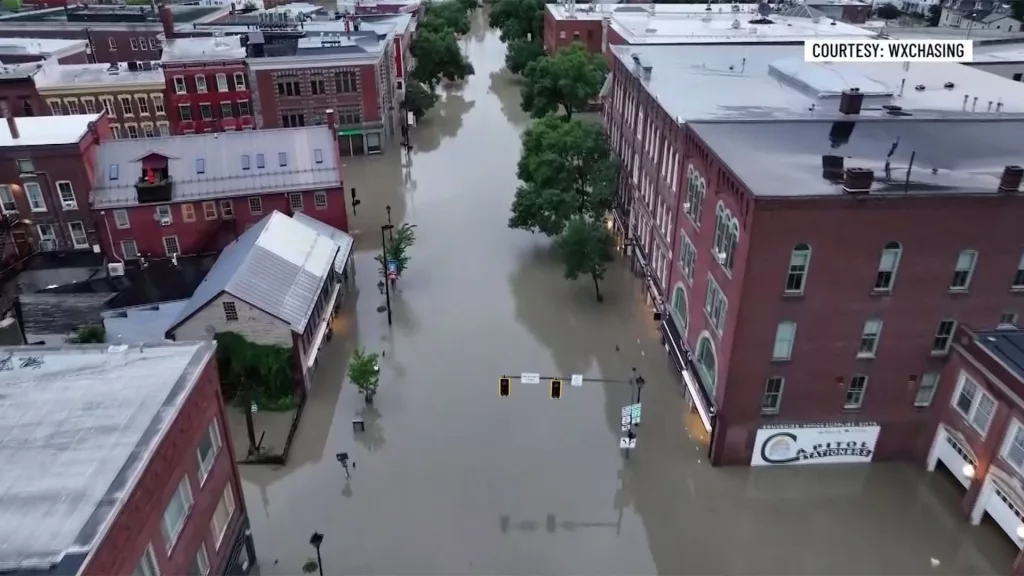RICHMOND, Vt. (WCAX) – As Vermonters in the path of flooding last summer continue to recover, communities are looking at buyouts and other strategies to restore floodplains to their natural state.
A short walk from the Winooski River in Richmond, homes on Esplanade Street show year’s worth of destruction from escalating floods.
“None of us on the street know what’s gonna happen long term. We’re all nervous,” said Stefani Hartsfield, whose basement was inundated with floodwaters last July, wiping out her water heater and leaving a hole in her foundation. Neighboring homes took similar blows. “We don’t want to leave Richmond. We don’t want to leave our street. We love it but we don’t feel safe in this house. And this July just kind of wrecked our feeling of security.”
Some of Hartsfield’s neighbors are opting into a state program that buys out flood-prone homes. Others, like Hartsfield, are working with the state to raise their homes off the ground, what she calls an imperfect solution. “There’s like one person, one company in Vermont who elevates houses right now. So, that could take five years and we don’t know how long it’s going to be stable,” she said.
Hartsfield’s story is one many Vermonters are contending with in the wake of last summer’s flooding. “When a river is accessing its floodplain, that’s a really great thing. When there are people in the way, that’s not so great,” said Elizabeth Doran, a research professor at the University of Vermont, who studies floodplains like those in Richmond. She says it’s a tough balance to strike — protecting the people who border waterways while allowing floodplains to do their job. “We also want our river and our dynamic enriched spaces for the resilience of our communities in the face of climate change.”
Despite the damage in Richmond, Doran says the town’s floodplains — particularly those with lots of trees — are a success story. Places like Montpelier, where buildings crowd the Winooski River and its tributaries, are in more dire straits. “It’s really important that the river has a place for all of that water to go,” Doran said.
While state leaders contemplate the future of floodplain management, lifelong Vermonters question whether a move away from water is the only logical next step.

